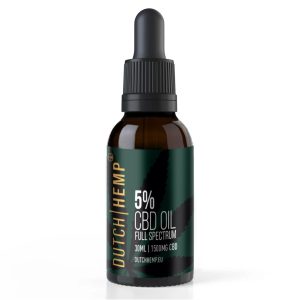What are terpenes?
Terpenes are a unique class of organic compounds that occur naturally in all plants and even some animals. They are aromatic substances that cause plants to each have their unique smell and taste. For example, terpenes are responsible for the typical apple flavor of apples. And because each unique plant variety produces a unique blend of terpenes, so each unique apple variety also has its own unique taste!
Chemically, all terpenes are hydrocarbons: molecules composed of only carbon (C) and hydrogen (H). However, terpenes can also form compounds with alcohol, aldehyde and ketone groups and then we call them terpenoids.
Types of terpenes
More than 48,000 different types of terpenes and terpenoids are known worldwide. These are classified according to the number of carbon atoms in the molecule. Here, one terpene unit contains ten carbon atoms. Therefore, a terpene molecule with ten carbon atoms is called a monoterpene, while a terpene with twenty carbon atoms is called a diterpene. Terpenes with more than forty carbon atoms are called polyterpenes. Polyterpenes are common in resin, wax and rubber. Monoterpenes are found mainly in the essential oils of plants, such as in laurel, peppermint and chamomile.
Terpenes in the cannabis plant
Also, the terpenes we encounter in cannabis are almost always monoterpenes. By now, scientists have already discovered over 200 different terpenes in cannabis. Some common terpenes in cannabis are:
- Mycreen. The most common terpene in the cannabis plant and responsible for the typical spicy hop scent. It is also found in wild thyme, hops, verbena and lemongrass.
- Limonene. This terpene gets its name from the fact that it occurs naturally in citrus fruits such as limes, lemons and oranges. It is the substance that provides the lime aroma.
- Linalool. Linalool is found in hundreds of plant species. Laurel, mint, cinnamon, citrus and birch trees, among others, and are also rich in linalool.
What is the use of terpenes?
In nature, everything has a function. Terpenes are also an indispensable link in the synergistic relationship between plants and animals. As mentioned, many terpenes are found in the oils of plants. These create a strong odor that goes around a plant. This odor ensures that certain bacteria, fungi and insects to which the plant cannot tolerate well are kept at bay.
On the other hand, terpenes attract insects and other organisms that the plant does want nearby. Think of bees that provide pollination. Also, when plants are attacked by insects, they release special terpenes that attract the natural enemy of this particular insect. In this way, terpenes thus fulfill an important role in the survival of the plant.
Terpenes in CBD oil
The terpenes found in cannabis also give each cannabis strain its own unique taste and smell. To ensure that the terpenes are optimally preserved in the CBD oil made with this cannabis, the cold CO2 extraction method is used. This method of extraction ensures that all cannabinoids and terpenes from the plant get into the cannabis extract. Diluting this extract with a carrier oil like hemp seed oil or olive oil creates a 100% natural CBD oil that is rich in all of the plant’s beneficial compounds.
Terpenes enhance the entourage effect of CBD oil
Terpenes have been used since ancient times as a fragrance and flavoring agent in foods, skin care and essential oils. Among other things, it has been discovered that certain terpenes in massage oils cause other active ingredients in the oil to be better absorbed by the skin.
In CBD oil, terpenes have a similar effect. Besides providing a pleasant smell and a characteristic taste, they also make the CBD and other cannabinoids such as CBG and CBN more effective in the body. Exactly how this works remains to be investigated, but presumably an entourage effect occurs when substances that naturally occur together in cannabis are also ingested together. In this way, terpenes enhance the effects of cannabinoids, just as cannabinoids enhance each other’s effects.




